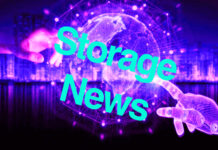Snowflake is adding agentic AI features to its offerings so that customers’ AI agents can safely and securely access their Snowflake data.
The cloud data warehouser made the announcements at its Build 2025 developer conference. Like every other storage system and data storage software supplier it wants its customers to have as much help in building and using AI agents on its infrastructure as possible, with no reason to go elsewhere. It will cater for customers using their own and Snowflake agents and is set on removing any roadblocks in its software to that happening. Snowflake’s announcements covered Snowflake Intelligence, its Horizon Catalog, Openflow, and a set of developer tools.

EVP of Product, Christian Kleinerman, said: “For more than a decade, Snowflake has served as a cornerstone of global enterprises’ data strategies. Our next evolution is about bringing AI to this data, allowing every customer to unlock intelligence that is uniquely their own.
”Our latest enhancements to the Snowflake platform make this possible, democratizing the power of AI so every employee can make smarter and faster decisions, fundamentally changing how our customers will innovate for years to come.”
The big news is having Snowflake Intelligence enable these employees to use natural language questions to look into the contents of their Snowflake data stores and find stuff out without having to handover the questions to data engineers who devise, write, and run SQL queries. Instead they give the questions to Snowflake’s Intelligence agent, which does the SQL work, gets the results and presents them in natural language. It can look into both structured and unstructured data, and into non-Snowflake data stores, and uses models from Anthropic, OpenAI and other sources.

Were told there are already more than a thousand Snowflake customers and 15,000 agents using Snowflake intelligence. Thierry Martin, Head of Data and AI at Toyota Motor Europe, was on message with his quote: “Snowflake Intelligence has transformed our development timeline, reducing agent deployment from months to weeks. This has fundamentally shifted our team’s focus from writing code, to prioritizing what truly drives value: building rich business context and robust semantic models. The result is a significant competitive advantage — we’re bringing secure, compliant data solutions to market faster, while eliminating data movement risks.”
We’re told that Snowflake’s AI research team developed an Agent GPA (Goal, Plan, Action) framework and Agent GPA judges that catches up to 95% of errors when tested on standard datasets, achieving near-human levels of error detection.
The data discovery-focussed Horizon Catalog is, Snowflake says, “a unified security and governance framework that secures and connects data across every region, cloud, and format — all interoperable and without vendor lock-in.” It is bringing open APIs from Apache Polaris (a vendor-neutral, open catalog implementation for Apache Iceberg) and Apache Iceberg REST Catalog directly into Horizon Catalog. This, Snowflake says, now provides an enterprise lakehouse that centralizes governance, security, and interoperable access management across their data in open table formats.
Horizon Catalog will integrate with Snowflake Intelligence to ensure secure access control and deployment of Snowflake Intelligence across a customer’s environment.
Snowflake also announced :
- Interactive Tables and Warehouses (in private preview) to help customers turn data into immediate insights and near real-time experiences.
- Near real-time streaming analytics (private preview soon) so customers can act on live data within seconds, and combine live data with historical context for things like fraud detection, personalization, recommendations, observability, and IoT monitoring.
- Partnership with Oracle (private preview), enabling customers to harness near real-time change data capture built on Openflow to continuously stream transactional updates into the Snowflake AI Data Cloud. Openflow helps securely automate data integration and ingestion from virtually any source, making it easier to keep data centralized across the enterprise lakehouse.
- Introduction of Snowflake Postgres (public preview soon), a fully-managed service that brings Postgres onto the Snowflake platform. This follows Snowflake’s acquisition of Crunchy Data. It’s open sourcing pg_lake (now generally available), a set of Postgres extensions designed to help developers and data engineers integrate Postgres with a lakehouse system.
- Snowflake Business Continuity and Disaster Recovery (now generally available) for managed Iceberg tables, safeguards data across the entire lakehouse.
The developer tools area saw several announcements:
- Cortex Code (in private preview), a refreshed AI assistant within the Snowflake UI that lets users interact with their entire Snowflake environment using natural language. Cortex Code helps users understand their Snowflake usage, optimize complex queries, and fine-tune their results to maximize cost savings.
- Cortex Knowledge Extensions, now generally available, integrates third-party content/unstructured data into a user’s Snowflake account, helping with RAG-enabled workflows.
- Model-Context-Protocol (MCP) Server, a Snowflake-managed implementation of the open MCP standard, lets AI agents access Snowflake data and tools without separate infrastructure.
- Sharing of Semantic Views lets users share semantic views, which are declarative definitions of business entities, relationships, and metrics to function as a single source of truth, internally or via the Snowflake marketplace, to provide consistency in AI and analytics across tools and teams.
- Snowflake Cortex AISQL enhancements (now generally available) so developers can build scalable AI pipelines within Snowflake Dynamic Tables (now generally available) to create AI-inference pipelines through a simple declarative SQL query. Leveraging AI Redact (in public preview soon) within Cortex AISQL, users can detect and redact sensitive data from unstructured data, allowing them to ready their multimodal dataset for AI while maintaining security and privacy.
- A centralized development environment, Workspaces (now generally available), eliminates siloed data work and boosts collaboration, providing a unified editor for creating, organizing, and managing code across multiple file types. Workspaces is enhanced with direct Git Integration (now generally available), providing developers a way to review version control, and VS Code Integration (now generally available), allowing users to work from their preferred Integrated Development Environment (IDE) and share code with the rest of their team.
- With dbt Projects on Snowflake (now generally available), enterprises can build, test, deploy, and monitor their dbt projects directly within their Snowflake environment. Snowflake is also helping organizations further accelerate developer productivity by running existing Apache Spark code on Snowflake’s engine with Snowpark Connect for Apache Spark (now generally available).
The extent of the AI ecosystem layered on top of Snowflake and other data data warehouse, data lake and lakehouse repositories is expanding rapidly in both breadth and depth. It could become a specialist area in its own right.
You can find out more about how Snowflake Intelligence is widening access to data with agentic AI in this blog post.








